ARTICLE
Understanding AI-assisted patent drafting: What attorneys need to know
Understanding AI-assisted patent drafting: What attorneys need to know
Artificial intelligence (AI) already enhances a range of legal processes. From contract and due diligence reviews to e-discovery and legal research, early adopters of AI have seen undeniable benefits in speed, accuracy and efficiency.
Today, AI promises many of the same benefits in the context of patent preparation and prosecution. However, between the decision to invest in AI-assisted patent drafting software and achieving a positive return on investment, a lot of hype and mischaracterization can misguide the unwary. The key to truly harnessing the power of AI is integrating it into functional software that enhances rather than replaces the practitioner and their workflows.
In this article, we cover the basics of AI and automation for patent drafting. Continue reading to learn how to harness these technologies safely and responsibly. Plus, discover the practical benefits they bring to the complex discipline of patent preparation and prosecution.
Key concepts: AI, generative AI and automation
AI, generative AI (GenAI) and automation offer distinct yet complementary benefits. While each is compelling, their true power is realized when used together.
- AI is a field of computer science focused on creating machines and systems capable of performing tasks that typically require human intelligence. In context, AI can analyze vast amounts of prior art, recognize patterns and understand semantic meanings within large datasets. This capability helps refine patent strategies, identify potential legal challenges and streamline the patent search process. These examples are achieved through different types of AI, including neural networks, natural language processing (NLP) and machine learning algorithms.
- GenAI is a subset of AI that’s focused on generating new content based on existing data. It uses advanced machine learning models to create text, images, or other media that mimic human-created content. In patent drafting, GenAI can help create sections of patent applications, such as the summary of invention or background, by generating contextually relevant content.
- Automation uses technology to perform repetitive tasks without human intervention. In patent drafting, automation can handle tasks such as synchronizing part references, maintaining consistency in terminology and generating routine sections of patent applications.
But why do the distinctions matter?
If AI is the solution, do patent and IP professionals need to know what’s under the hood?
The distinction matters because not all solutions are built the same. Solutions that begin with GenAI at their core are not ideal for all patent drafting use cases. Using tools that leverage GenAI as a component rather than the foundation ensures that you, not the machine, remain in control of the drafting process. This enhances your work without compromising quality or compliance.
While GenAI steals the headlines, an integrated and responsible approach to automation and AI technologies delivers the safest and most practical benefit. By integrating AI, including GenAI, automation and predictive analytics into existing patent drafting workflows, organizations can effectively marry technology to expertise.
Harnessing AI safely in patent drafting
AI assists practitioners rather than replaces them. But to harness AI safely and effectively in the patent preparation and prosecution process, organizations should implement certain safeguards and best practices:
- Maintain control: Choose AI tools that allow you to customize and control the extent of AI assistance, ensuring you remain in charge of the drafting process. Decide when and where AI-generated content is appropriate. Always review it to ensure it meets your quality standards and complies with legal requirements. Your expertise is crucial for final approval.
- Generate content when and where needed: Use AI tools that offer prompt assistance features to generate specific sections of a patent application on demand. For example, AI can take an attorney-written claim and generate a suitable title or summary. Make sure the AI tool generates contextually relevant content, understanding the specific requirements of each section of a patent application to fit seamlessly.
- Ensure reliability and trustworthiness: Opt for solutions with a proven track record built on years of expertise. This ensures that the AI tools are trustworthy and capable of consistently delivering high-quality results. Choose AI tools that prioritize data security and confidentiality, which is especially important in the legal sector, where sensitive information must be protected.
- Leverage appropriate language models: Local language models enhance security by keeping data within the user’s system, suitable for select tasks in patent drafting. In contrast, cloud-based models offer scalability and access to the latest advancements. Choose the right model for the task to balance legal and technical considerations and select solutions that integrate with your organization’s language model for maximum flexibility and control.
- Maintain libraries of terms and descriptions: Choose solutions that allow you to compile and manage libraries of prior figures, descriptions and text that will complement GenAI when existing and proven language is preferred.
Once again, it’s important to note that for AI to be truly effective and safe, it must be integrated into functional software that enhances workflows without disruption — a key advantage for achieving efficiency and effectiveness in patent preparation and prosecution.
Harness the potential with Rowan Patents
The art of patent drafting is intrinsically complicated, comprising numerous distinct steps that require technical, legal and administrative skills. These processes demand meticulous attention to detail and adherence to strict deadlines and regulations, making them ideal for the introduction of a streamlined, integrated workflow solution.
Rowan Patents, now part of Clarivate™, seamlessly integrates AI, including GenAI, and automation to provide a comprehensive toolset explicitly designed for patent professionals. With customizable AI features and prompt assistance to interact with AI models, you can generate specific sections of a patent application on demand, ensuring all AI-generated content is contextually relevant and subject to your expert final review. Built on years of practitioner experience that combines deep patent and technology expertise, Rowan Patents offers robust support, continuous updates and a priority focus on data security and confidentiality.
The integrated drafting environment synchronizes every part of your application with linked and synced objects, ensuring consistency and reducing errors. By automating repetitive tasks, Rowan Patents allows you to focus on high-value work, enhancing efficiency and maintaining the high standards required in your practice. With Rowan Patents, you have a dependable partner in your journey toward more efficient and effective patent prosecution.


